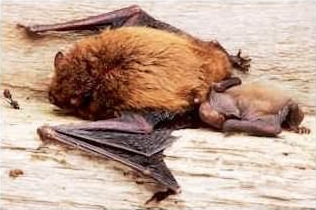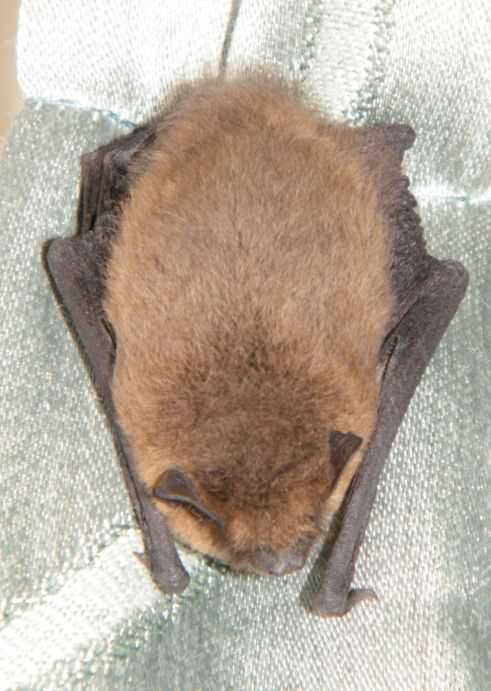 Pipistrelle Bat - Pipistrellus pipistrellus
Pipistrelle Bat - Pipistrellus pipistrellusFamily - Vespertilionidae
 Pipistrelle Bat - Pipistrellus pipistrellus
Pipistrelle Bat - Pipistrellus pipistrellus
Family - Vespertilionidae

Picture ©2001 Pat O'Reilly
Fishing in Wales

Picture ©2011–
Click bottom photo for a larger image
The smallest of the 14 British Isles bat species and probably the most common in the UK, it has a wingspan of up to 25cm (10in), a body length of 3–5cm (1.2–2in) and rounded ears with a membrane growth or tragus. They weigh 3–8 grams (0.1–0.3oz). Found throughout most of the country in woodland, farmland and towns, roosting in lofts, eaves and hollow trees. Small body with light to chocolate brown fur darker on its back than below. Nocturnal habit emerging from the roost at sunset or just after to feed on small flying insects. Hunts in a favourite area with a fluttering wing beat and jerky movement for small insects, capable of consuming several thousand a night. hibernates over winter starting November/Early December.
They roost in crevices, loft spaces and tree holes, usually producing one or occasionally two (twins) offspring and can live to about 15 years. The young are fed on the mother's milk up to about three weeks old when the beginning to forage for their own food. As with all bats it hunts using echo location to find and capture its prey. All bat species are protected under the Countryside and Wildlife Act, it being an offence to take, disturb, intentionally kill or otherwise harm a bat or its habitat. Any work that is planned that could result in the disturbance of bats or their roosts must be communicated to English Nature, The Countryside Council for Wales, Scottish Natural Heritage or DoE (Northern Ireland), depending on the area.
There are two subspecies of P. pipistrellus denoted by the frequency of their echo–location calls at 45kHz and 55kHz, this needs a bat detector box to identify each type. Three other Pipistrelle species are to be found in various areas, Kuhl's Pipistrelle – P. kuhli Southern Europe, Asia to Pakistan and North Africa, Nathusius Pipistrelle – P. nathusii most of Europe but rare in Western Europe, Savi's Pipistrelle – P. savii Southern Europe, Asia and North West Africa.
 The Pipistrelle is a listed species in the Biodiversity Action Plan for Hampshire, as a UK widespread and species of local importance, with a rapidly declining population, locally scarce rare with a high threat rating. Listed as a mosaic landscape species in ancient semi–natural woodland, hedgerows, unimproved neutral dry grassland, hay meadows, chalk streams and urban areas. A SAP exists for the Pipistrelle, as a mosaic landscape species with a high profile or indicator species rating. The Pipistrelle also has a UK BAP priority species rating and is listed under Bern 2 and Bonn conventions and the Habitats & Species Directive schedule 5.
The Pipistrelle is a listed species in the Biodiversity Action Plan for Hampshire, as a UK widespread and species of local importance, with a rapidly declining population, locally scarce rare with a high threat rating. Listed as a mosaic landscape species in ancient semi–natural woodland, hedgerows, unimproved neutral dry grassland, hay meadows, chalk streams and urban areas. A SAP exists for the Pipistrelle, as a mosaic landscape species with a high profile or indicator species rating. The Pipistrelle also has a UK BAP priority species rating and is listed under Bern 2 and Bonn conventions and the Habitats & Species Directive schedule 5.
Site design ©1999– Brickfields Country Park - Privacy -